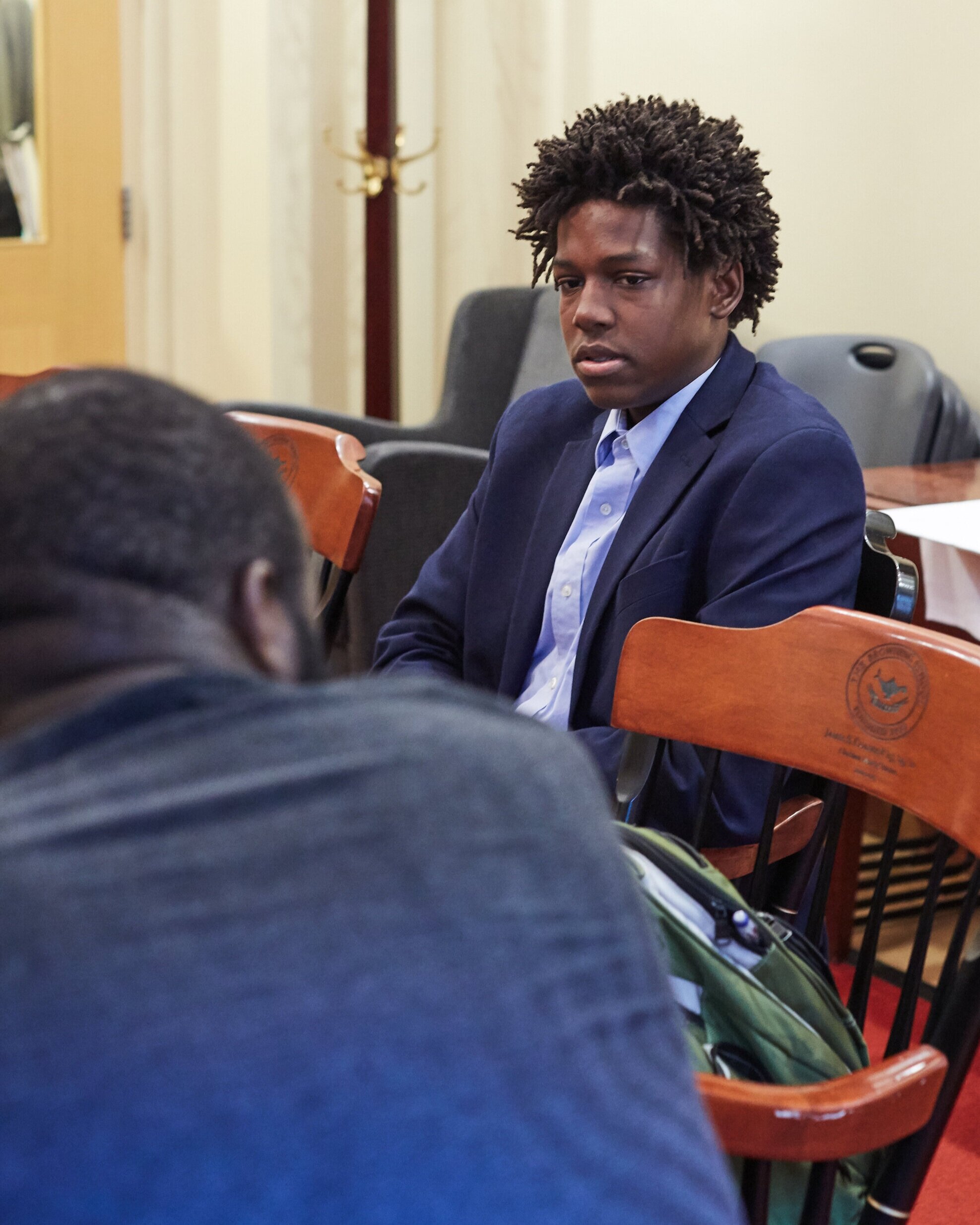Leaning into our Mission
A Q&A with our new Director of Equitable Practices and Social Impact.
July 2021
The work of equity, diversity, and inclusion benefits us all, and it is in our best interest to work together in a way that asks all voices to be part of creative solutions. Director of Equitable Practices and Social Impact Naledi Semela spoke with the Buzzwords’ editors about the work that lies ahead as he begins his term at Browning this month.
A video from Mr. Semela where he discusses his passion for teaching and working with boys as well as his excitement to join our community.
Editors: Can you define precisely what your job title means? How is equitable practice different from diversity and inclusion? And how is social impact different from community service?
Naledi Semela: I think that the title is very intentional on the part of the School to reflect that the work continues to evolve. Diversity is so important; having representation of people from different places and backgrounds, bringing different ideas and perspectives to the community, is an important step in making Browning—or any institution—stronger than it might otherwise be. Inclusion describes the ways in which the community embraces people across differences. Taking a strategic and critical eye to equitable practices involves how the School maintains an environment that serves those in the community, most of all, students, in the ways it needs to. Equitable practice acknowledges systems that have an impact on the human experience and seeks to eliminate barriers to a fulfilling and rewarding experience for all members of the community and across the beautiful array of identities in it. The best possible Browning experience for all students and community members will require our vigilance and thoughtful consideration of the ways in which we pursue the School’s mission, and it requires us all working together to support the personal and institutional growth that will help us get there.
Social impact will surely include activities we might call “community service” or “service learning.” Browning’s mission charges us with preparing the boys to contribute meaningfully to our world. “Our” world, because we have a lot to offer, and so do others. Social impact is therefore about the responsibility of Browning boys to utilize their own gifts and to foster for others opportunities to offer theirs, all so that we share a world that is stronger tomorrow than it was yesterday because of our collective contributions. The relationship between students and community is a reciprocal one and an extension of, not a supplement to, the learning community inside the Red Doors.
The title, and I hope the role, links these programmatic areas together in an office that will aspire to ensure that the K-12 Browning experience is an exploration of self, of the world, and of each boy’s place in it.
Asian Affinity Club members celebrate Lunar New Year annually, partaking in cultural activities.
The African American Affinity Group provides confidence and overall awareness in expressing and understanding its members’ cultures.
What attracts you to this line of work—and doing it in K-12 schools?
I moved around a lot as a young person. Moving wasn’t always a bad thing, but I would say I had trouble feeling grounded in a particular community of people. Each time I entered a new environment, there were ways I felt the need to fight for my own dignity, to assert that I deserved full membership. This was true for schools, residential neighborhoods, and friend groups. Coming from a multiracial family, I was often struck by the de facto segregation that defined communities, and I had to figure out where I fit. This work is my calling because every person, starting with every child, deserves to belong and to feel great about what they bring to the world. K-12 education is where so much identity development takes shape and the work we do here will go a long way toward how Browning boys go on to make the world a more compassionate and just place for us all. We have gifted educators who love kids and that love serves as a model that carries on to college, careers, and the lives of the proud Browning alumni.
What are the ways in which you see DEI work being misunderstood in the media and in larger society? How can we bridge the gap between what some people think it is—and what it might look like at our school?
A disturbing trend I have seen in New York City, and indeed nationally, is the idea that diversity, equity, inclusion, and belonging (DEIB) work seeks to assign blame and make certain groups feel guilty about a past for which they have no personal responsibility. To me, it’s not at all about guilt, but it is about urgency. I truly don’t see equity and inclusion as a zero-sum game. Measures that we can put in place to lift up traditionally marginalized groups should and will enhance the experience of all students in schools. Courageous and compassionate community members will ideally be urgently invested in and, when necessary, fight for the dignity and humanity of their peers—that’s what DEIB is all about. When it comes to curriculum, I’ve heard dissenting voices, primarily through the media, lamenting the idea that today’s students will miss out on the experience of reading certain texts. Again, I would argue that adding diverse stories and perspectives to the collective learning experience benefits all students by deepening the learning that comes through the study of literature and history, and by accessing it from multiple perspectives. I stress here that in most cases, we are looking to expand the cannon, not to replace it—much of the new material will complement the traditional texts that students will surely encounter in the course of their academic lives. Yes, it means that some students who may not have felt seen in the past will now resonate with the material in a profound way, but the idea that it takes away from students in the majority is not supported by any compelling evidence I’ve seen. Hopefully, the temperature of the dialogue, nationally, around DEIB work will simmer to a level where there is a true exchange of ideas that will lead to fulfilling partnership going forward.
La Sociedad Latina strives to provide a safe space for young men who identify as Latinx, helping its members to develop their individual voice for the Latinx community both broadly and inside the school.
How do you balance needing to particularly ensure that those of a marginalized identity are supported with ensuring that all individuals, even those in the majority, are included?
Part of this is about inviting folks to join us in considering the difference between individual identity and systems. We all exist at the intersection of many identifiers and have lots of ideas that are shaped by our own experiences. At the same time, there are powerful and pervasive structures that are not affected by an individual’s set of beliefs. That creates an environment in which a well-meaning person in a position of privilege cannot simply will us into a state of equality. Several barriers to equity exist at the policy level, others are circumstantial, and, of course, some are a result of deeply held biases. It is our job to explore all of these challenges together: to learn from one another and struggle together toward a shared prosperity. Sometimes that will involve asking individuals to employ empathy and see things from the perspective of another, to push beyond their own legitimate struggles and see that they can contribute to the solution. That work relies on trust, and it will take us spending as much time thinking about the spirit that unites us as we do about some of the features that differentiate us.
What does success look like in this role?
Some progress we make in equitable practices and social impact will be measurable by data—both quantitative and qualitative—and success will mean that we are collecting and responding to that data responsibly. Still, there is another piece that will be more ethereal. People should feel confident that we are making progress and living our mission earnestly. I am excited to learn more about the Browning community and for us to dream together. As Gloria Steinem put it, “dreaming, after all, is a form of planning.”
Learn more about Browning’s work on equitable practices and social impact.






